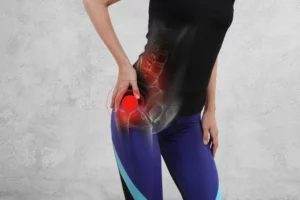The question we are often asked as Women’s Health Physiotherapists is: “Is this normal?”
To shed some light on normality and the pelvic floor, we’d like to provide some accurate information about postpartum prolapse.
We are bombarded daily with images, videos, blogs, forums, facts and figures and it can be difficult to sort out fact from fiction.
At Total Physiotherapy, we have seen an increase in new mums reporting their concerns that “everything feels heavy and like it might fall out down there.” Unfortunately, it is easy to jump to conclusions with the vast amount of information that is readily out there on the internet, with many women consulting “Dr. Google” as a first resort. This has led to suggestions of prolapse, which in turn, led to some distressing posts and pictures being displayed on search engines.
There is no doubt that the internet can be a fabulous tool, but at times the information can be conflicting, confusing and a little bit scary. We hope our blog helps you sift through facts from misconceptions, shedding some light of the unfamiliarity of normality for many women out there.
The childbearing year can be extremely conflicting, confusing and scary. Your amazing body has spent 9 months adapting and changing to grow and nurture another human. It then needs the additional 3 months to recover.
What happens in this time?
- Your uterus needs to return to the size of a loose fist;
- Your hormones which sustained your pregnancy need to return to normal – this is different for everyone, can differ between pregnancies and can be slowed down by breastfeeding.
During pregnancy the hormonal changes and the weight of the baby create downward pressure on the pelvic floor. A vaginal delivery will create stretching and occasionally some tearing. The body has incredible healing capacity however everything does not bounce back immediately.
So, do I have a prolapse or not?
The best way to find out what is going on is to see your GP or a Women’s Health Physiotherapist and they can check this for you.
The strict definition of a prolapse is the descent of the bladder, uterus or rectum into the vaginal space. It might appear as a lump or bulge or give the sensation of heaviness. During the recovery phase after you have had a baby, the vaginal space may remain stretched, giving the feeling or appearance that something has dropped. Often, we will describe what we see as “the normal stretchiness of tissues that you’d expect after having a baby” rather than a “true prolapse.” We’re not just trying to make you feel better – research suggests tissues continue to recover for up to 12 months after you’ve had a baby.
How to help your recovery?
Recovery from any stress or change to our bodies, be it surgery, illness or having a baby- requires rest and sleep in conjunction with regular exercise and good nutrition. Fatigue is a common byproduct of new parenthood; interrupted sleep, feeding and settling not to mention just trying to have a shower. Fatigue will impact everything including your pelvic floor muscles. Remember to pace yourself, some activity, then some rest, always listening to your body – especially if you have some sensations of heaviness. Exercise can be as simple as doing your pelvic floor or abdominal strengthening exercises as these will prepare your body for when you have more energy to go for a longer walk and eventually return to your favourite exercise. For more information on returning to exercise, see our blog on postnatal return to sport.
So, now what?
A postnatal physiotherapy assessment can be done any time after your 6 week check. We can advise specifically on your situation (including whether everything is tracking normally) and where to start with pelvic floor and other exercises. Book in a consultation with one of our Women’s Health Physiotherapists: Louise Henderson, Rebecca Rutherford and Laura Wickens.
Contact us today on 02 9907 0321 for more information or book an appointment online here!


